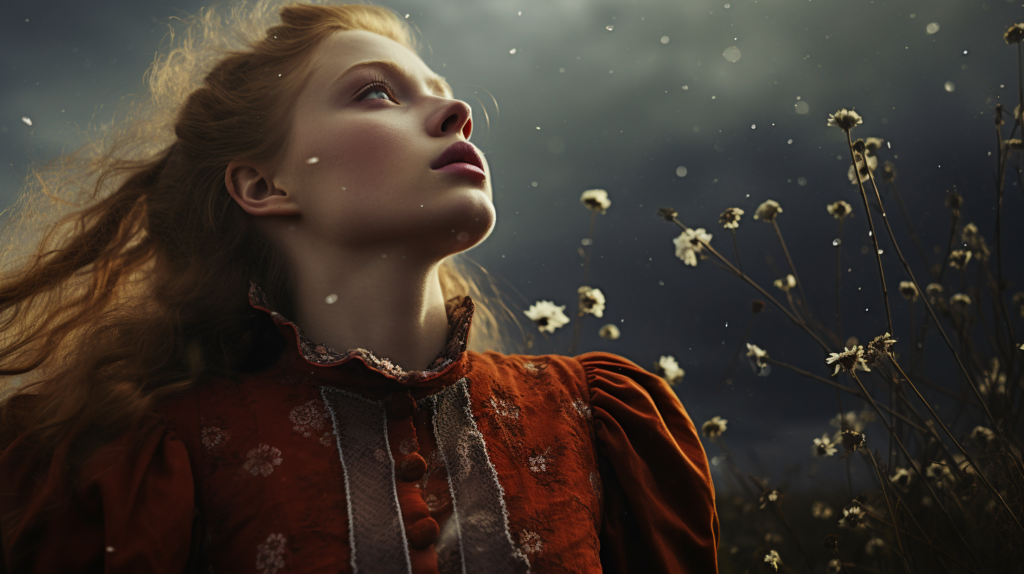Take a moment to appreciate the beauty of telling stories through photos and videos – capturing every moment and keeping it alive forever! From children’s birthdays to summer vacations or even a simple evening out with friends, each moment can be documented and turned into an interesting narrative for all to remember. Whether you are an amateur photographer or a professional videographer, you’ll find that creating a photo or video story is as simple and fun as shooting the frames themselves! Read on to learn more about how to bring your own special photographic story to life.
1. Setting Up Your Story Before You Begin Capturing
If you’re a visual storyteller, you know that the setup for a story is a crucial step. In order to capture your audience’s attention and hold it, you want to ensure that the fundamentals of your story — the plot, characters, and overall themes — are all properly established.
Here are a few tips to help make sure your story is compelling from the get-go:
- Outline Your Story’s Skeleton: Create a basic overview of the plot, characters, and theme for your story. What is the story about? Who are the protagonists and antagonists? What is the message you want to communicate?
- Design Your Visuals: Design a look for your story, such as color palette and font choices, before you start shooting. You want to have a consistent aesthetic flowing through your story that will help draw your audience in.
- Choose Your Locations: Pick out your scenes carefully. Where are your characters located? How will this setting help convey the message of your story?
Taking some extra time to properly set up your story will pay off — and when your story is ready to be shot, your audience will already be invested.

2. Understanding the Power of Visuals to Communicate Your Story
What you are communicating is just as important as how you are communicating it. Visuals are a powerful way to communicate your story in an interesting, visually appealing way that your readers will connect to.
Utilizing visuals to communicate your story can help to engage a wide range of audiences. Visuals can evoke emotion through expression and composition, while complementing your written content. For example, a combination of an image depicting an emotion and descriptive content can paint a vivid sense of understanding for your reader. Additionally, visuals can help to portray a story more clearly than words alone.
Constructive visuals can help to break up your content and make a strong impression. Images with relevance to your story can be used to emphasize key points, and visual elements like diagrams, charts, and timelines can add an interactive element to the user experience. Consider using visuals to emphasize your story, and to more effectively communicate key points or concepts.
3. Deciding on What Equipment You Need for Your Photo/Video Story
Figuring out what equipment you’ll need for your photo or video story can seem tricky. Whether you’re a professional photographer or hobbyist videographer, you’ll need a basic understanding of your gear before you begin.
Deciding what equipment you’ll need depends on the type of story you’re telling. Are you shooting outdoors? Indoors? Are you covering a wide range of subjects? Or are you creating a more focused, intricate piece?
Here are some of the essential tools you may need:
- a camera with lenses
- tripods and other stabilizers
- external lights
- sound equipment such as microphones and recorders
- other accessories, such as filters and remote controls
You don’t have to go all out with the gear but it’s important to understand what you’ll need to make sure your story is well-told. By familiarizing yourself with the different pieces of equipment and researching different methods of storytelling, you’ll be better equipped to capture your vision and create a beautiful story to share with the world.

4. Exploring the Art of Storytelling Through Images
The Power of Imagery
Stories have been used for generations to bring people together, to form communities and to bring understanding. The power of storytelling is undeniable – it can shape how people think, make them swoon, empathize or leave them with an understanding of the world.
Storytelling through imagery has become increasingly popular due the accessibility of digital photo editing software. We now have the ability to transform the mundane into extraordinary. We can create images with powerful emotions and feelings that captivate its audience. Understanding light, color, and composition is an art form that can take years of practice and can create stunning visuals.
Exploring the art of storytelling through imagery offers a unique platform to convey emotion and thoughts. Through skillful creation and editing of images, we are now able to explore our creativity, express ourselves and share a glimpse of our lives to the world.
5. Strategic Planning: How to Tell Your Story Through Visuals
With visual storytelling, you can better tell the story of your business—but if you’re not a graphic designer, you might struggle to know where to begin. Fortunately, there are plenty of ways to use visuals to enhance your strategic planning process.
Think About Your Audience: Before you start planning visuals, take a step back and think about your audience. Who are you targeting? What resonates with them? Identifying your audience’s characteristics—age, gender, occupation, income level, hobbies, language—can help you decide which visuals to incorporate into your strategic plan.
Use Themes and Symbols: If your target audience falls within a single demographic, consider incorporating symbols and themes to capture their attention. For example, if you’re targeting a younger audience, illustrations may be more effective than stock photos. Additionally, using colors, patterns, and fonts that reflect your brand will help you reinforce your message.
- Utilise colours, patterns, and fonts to reflect your brand
- Take into consideration your audience’s age, gender, occupation, etc.
- Map out effective illustrations and symbols applicable to your strategy
Making the most of visuals is essential to any successful strategic plan. Follow the above steps to ensure your visual storytelling is on point and helps to reinforce your main goals and objectives.
6. Editing Your Images and/or Video Clips to Show Your Story
The finishing touches for your digital story are just as important as the foundation you’ve laid. Start editing and crafting your images and video clips to pull together all the components into a unified experience.
Include a few images for each scene, trim video clips down to the few seconds that really help establish each portion of the story, and adjust the brightness and contrast to create visuals that emphasize your point. A few tips for editing your images and video clips:
- Use transitions between clips and images
- Experiment with sound effects
- Adjust the saturation to make colors pop
- Include any text overlays if appropriate
A cleverly crafted video cuts straight to the heart of your story and keeps your audience engaged. Make sure that whatever visuals you choose represent the story you’re trying to tell and that the clips and images are motivating your viewers to move through the story you’re creating.

7. Crafting Captivating Captions for Your Visuals
A picture may be worth a thousand words, but sometimes a few words makes all the difference. When you are sharing visuals on social media and in the blogosphere, catchy captions can help make the image more captivating. Here are 7 tips for .
- Keep it Short and Sweet: Captions should be concise and straight to the point. Keep your captions to one sentence and highlight the main part of the image, without going off on a tangent.
- Ask a Question: Encourage engagement by posing a question in the caption. Ask your audience what they think about the image to spark a conversation and build relationships.
- Create a Story: Use the caption to tell a story about the image. Tell a backstory or write from the perspective of people in the image, to give deeper meaning to the visuals.
In addition, try adding humor, sharing a call to action, or referencing a well-known meme. Depending on the social media platform and audience, you can customize the captions to be educational, inspirational, or entertaining. Ultimately, know your audience and write captions that will appeal to them.
8. Incorporating Music and Narration into Your Photo/Video Story
Adding audio elements to a photo/video story adds an extra layer of emotion and allows you to further engage your audience. Music and narration create an ambience and a sense of atmosphere that can enhance your story.
Music can provide a soundtrack for your story, creating a mood and bringing a scene to life. It can help to set the tone and create a deeper impression on your audience. When creating an online video, you can choose a track from online music libraries like YouTube’s Audio Library, where you can find music clips that are free to use as part of your project. Alternately, you can opt for royalty-free music subscriptions, or use a piece of existing music that is already popular and widely known.
Adding a voiceover or narration can also help to add a unique perspective and enhance your story. This can help to bring clarity to the story you’re telling, giving it more meaning and emotion. You may want to read out your own script or use a voice actor, depending on the type of story you’re telling. Either way, it can help to give your story greater presence and memorability.

9. Best Practices for Splicing Your Visuals to Tell Your Story
Telling a story with visuals requires careful consideration of how the pieces come together. Splicing visuals to convey the entirety of a story is an art, but one that can be mastered with practice. Here are some best practices to help you bring your vision to life.
Know Your Audience
Before starting to splice your visuals, take a moment to consider your audience. Ask yourself questions like: What kind of visuals are likely to resonate with this audience? What will its emotional reaction be to the visuals? What kind of information do I need to impart to them? Knowing your audience is essential to selecting the right visuals to string together in order to provide them with a cohesive story.
Focus on the Moment
Creating a story through visuals is done best when the frame captures a single moment in time. The visuals should be selected to draw people’s attention to the importance of the moment, rather than encompassing the larger context or preceding events. Larger narratives are best revealed through a well-crafted sequence of these individual frames.
Build an Emotional Arc
When it comes to conveying your story, the visuals should create an emotional arc. Think about your beginning, middle, and end in terms of tone and energy, and make sure your visuals carry that from start to finish. Splicing together visuals that convey the right emotion at the right time will help your story stay compelling as it unfolds.
10. Optimizing Your Photo/Video Story for Digital Distribution
In a digital age where watching videos online has become second nature, it is essential to optimize your photo or video story for digital distribution, allowing you to reach the largest audience possible.
If you are producing a visual piece, or a combination of visuals and audio, there are steps you can take to achieve the best results when uploading your story to the web:
- Optimize video size and format: Your video must meet both the format and size requirements of the platform or video player you are using in addition to the resolution preferences of the viewers. These requirements may vary depending on the outlet, so it is important to be aware of the details.
- Compress audio/video files: Use compression software to reduce the size of audio/video files. This will allow your content to load faster when others access it, and allow it to load and play without any buffering.
- Make sure both audio and visual elements are in sync: When producing video files, it is important to ensure that audio and visuals are in perfect sync with one another. Synchronization issues are distracting to viewers, and can leave them with a negative impression of your video.
By taking the right measures, you can make sure your story is optimized for digital platforms and maximizes its reach to the right people. If done correctly, this can translate into problem-free playback of your video, and an increase in viewer engagement.
Telling stories with photographs and videos doesn’t have to be difficult. With the right techniques, your stories will come alive, no matter the subject matter. So grab your camera and get creative – let your tales unfold, with each frame capturing a unique moment.
At the end of the day, it’s all about something bigger: sharing stories that matter, that can be passed on, and that can be experienced and enjoyed by everyone. So keep it simple and let your stories speak for themselves.
